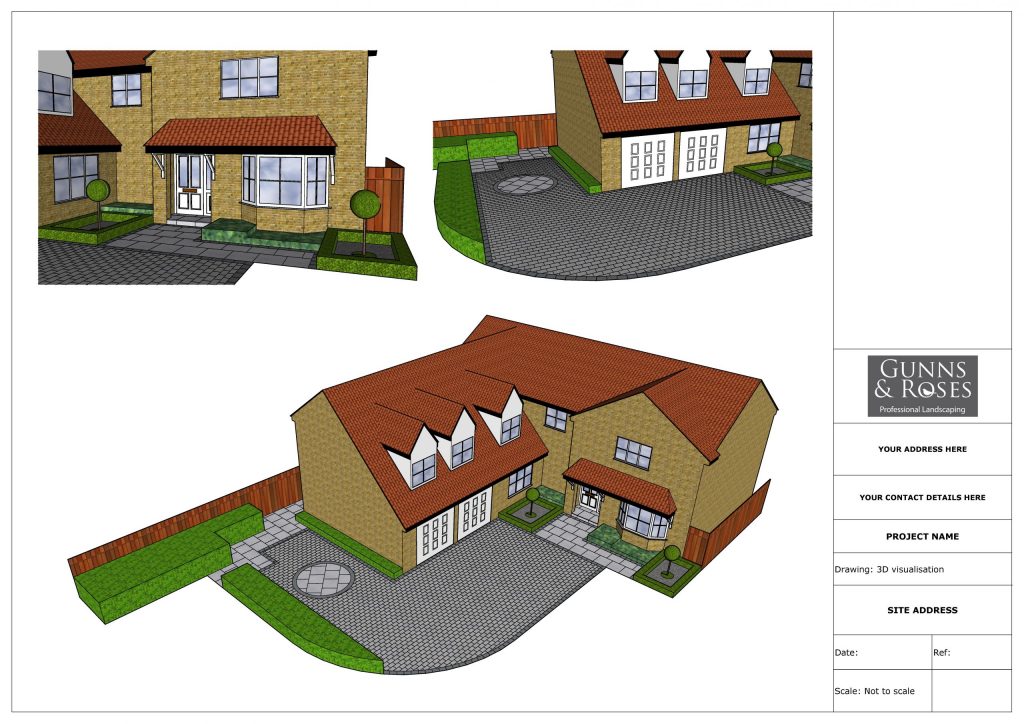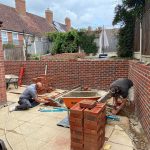SITE SURVEYING: ALAN SARGENT ADVISES
Alan Sargent, renowned landscaping consultant, columnist and expert witness discusses the ins and outs of site surveying. In this article, Alan reminds us why accurate record keeping is key to the success of a landscaping project.
Creating beautiful gardens is one of the most exciting and pleasurable career experiences. It involves many diverse and complex skills and working in an industry that offers many rewards, both spiritual and financial. The ability to take a blank canvas new-build site, or an overgrown jungle and turn them into a cleverly styled environment that will grow and mature over the years and become the life space of an individual or family takes a lot of skill.
Good landscaping starts with great garden design
Building such creations must begins with the design, and the rapport between the garden owner and designer is obviously important. The most essential element of any successful project is communication between two parties in the first instance. The skill of the designer is to match and exceed the wishes and expectations of the customer. These factors are not simply to provide an attractive garden. They must also be carried out to an agreed initial budget. It is both pointless and annoying if the designer proposes a wonderful scheme that is too expensive for agreed budget.
Communication must be married with information, and to avoid future misunderstandings. This must be recorded in a manner mutually understood by Designer and Customer. Designers should have a clear brief in mind. The brief is established in agreement with the customer to work towards meeting those client expectations. And a third Party introduced (even behind the scenes) in the shape of the installer or Landscaper. This third presence does not have to be named or identified, but their input sought by the Designer to ensure that such a project can indeed, be constructed and to the given budget.
This communication is essential to avoid disappointment for both Designer and Customer if the project is to proceed harmoniously.

Clear visualisations of garden design is the best way to manage customer expectations
How to achieve Harmony?
The most successful route is via Teamwork. Whether that team is found in a Design & Build Landscape Company or a Designer and Landscaper working collaboratively together behind the scenes or otherwise. (Or a Landscaper working with a Garden Design Company.) As long as the team are working as a single unit as far as producing the requisite plans and drawings to be presented to the Customer, it matters little who is the prime team partner!
Many Landscapers are superb at construction but do not offer designs. Preferring instead to work with individual Garden Designers who offer their drawings and plans for tender to landscape companies. If they are approached by a potential customer, they may prefer to recommend a known and trusted garden designer and then step back. Perhaps hoping to have the opportunity to quote for any scheme that arises from that introduction.
Whichever system of working has been successful in the past, opportunities exist for Landscapers to offer their own ‘In-House’ designs by working collaboratively with Specialist Companies who offer to design gardens under the name of the Landscape Company, much as if they were working with their own Design & Built Team. Plans and drawings appear only with the Landscapers name and company details, which are offered to the customer.
Comprehensive Information is Essential
Comprehensive and Accurate Information communicated by the Landscaper to the Designer – or vice-versa – is the key to success with any Design & Build project (which is precisely how to describe such collaborations) no matter which Party gathers this information.
The initial stage of any process is the Client Interview. This should be a formal meeting, held under a rules and procedure formula designed to record primary essential facts. These initial facts will form the foundation of all future relationships between the client and interviewer (either Designer or Contractor) and should be a comprehensive as possible.
It is helpful if a Template or Guide is given to the customer at some stage before the meeting. This will indicate the nature and depth of the information that will be required at that initial stage, to render the whole project process transparent and further underline the professionalism of the interviewer.
What information do you need to gather?
Customer’s name
Information such as the name of the customer. Simple enough, unless there is more than one person involved i.e. husband and wife or partners; one, two, three or more persons directly involved who will wish to be included under the heading ‘Name of Client’. It is vital to ascertain if the property is owned by the potential Client, a Limited Company or other body.
Site address and ownership
The address of the property and name of owner if different from the customer. (Never assume that the customer is the registered owner of a site you are working on)
Details of site visit
The date and time of the visit, including weather at the time of the site inspection. This information may be invaluable if the site is surveyed in a drought, and the land turns out to be a floodplain!
Make sure the written record is clear
When carrying out the interview, listen very carefully and write down/record what you are being told. Failure to comply with any instruction, even if couched in general terms, may become a problem at a later stage. Never allow any phrase that could be misconstrued at a later date or could used in such a way that could be exploited. Beware of terms such as ‘I want a Wow Factor’, ‘Maintenance Free’, ‘Non-slip’, ‘Attractive All Year Round’, ‘Rabbit Proof’, ‘Child Friendly’ . These, and a host of other phrases are purely subjective and in the eye of the beholder. They should not be allowed to become contractual instructions.
Site photographs
Ensure that a full and detailed photographic survey is made of the property; not only the garden, but the house, all round. Note any damage/defects/subsidence/scratches etc that may be blamed on the contractor at a later stage (this survey should be conducted again before any works commence). Also note the condition of any air bricks, downpipes, gullies, etc.
Site surveying tips
Ensure that all measurements are accurate by personally checking everything and not relying on plans provided by third parties. EVEN IF THEY ARE VERY RECENT. In the event of any problems or discrepancies at any stage, failure to check measurements used in plan making will fall to the surveyor at the time of making the site inspection.
Note all useful external site resources including taps, power points and their wattage, voltage limitation. Formally request that permission may be granted to use these facilities without charge or cost. Make reference to site requirements including permission to place skips, toilet and welfare including location/siting, parking and a host of other factors that should be included in the Site Survey Template
Once you are satisfied that you have gleaned every piece of relevant information from the initial interview, ensure that you have all contact details and information relevant to the project and that you have provided contact details of the interviewer, in case anything crops up that requires clarification by either Party.
Remember, the only information that the Designer will have will be that as supplied by the person conducting the survey and initial interview.
Be precise, Be careful, Be diligent, Be successful!
Alan Sargent FCIHort MPGCA

For more insightful advice on any aspect of running a landscaping business, visit The Landscape Library. The Landscape Library is a large collection of articles written and collated by Alan Sargent. You’ll find information on landscaping materials, landscaping techniques, management tips, contract writing and much much more.
Click here to visit The Landscape Library
You may also find these helpful
Site measurements – which site measurements do the MGD team ask for? Read more
The Landscapers Guide to Good Garden Design. Experienced landscaper Paul Baker shares his advice on what makes a good garden design. Read more




